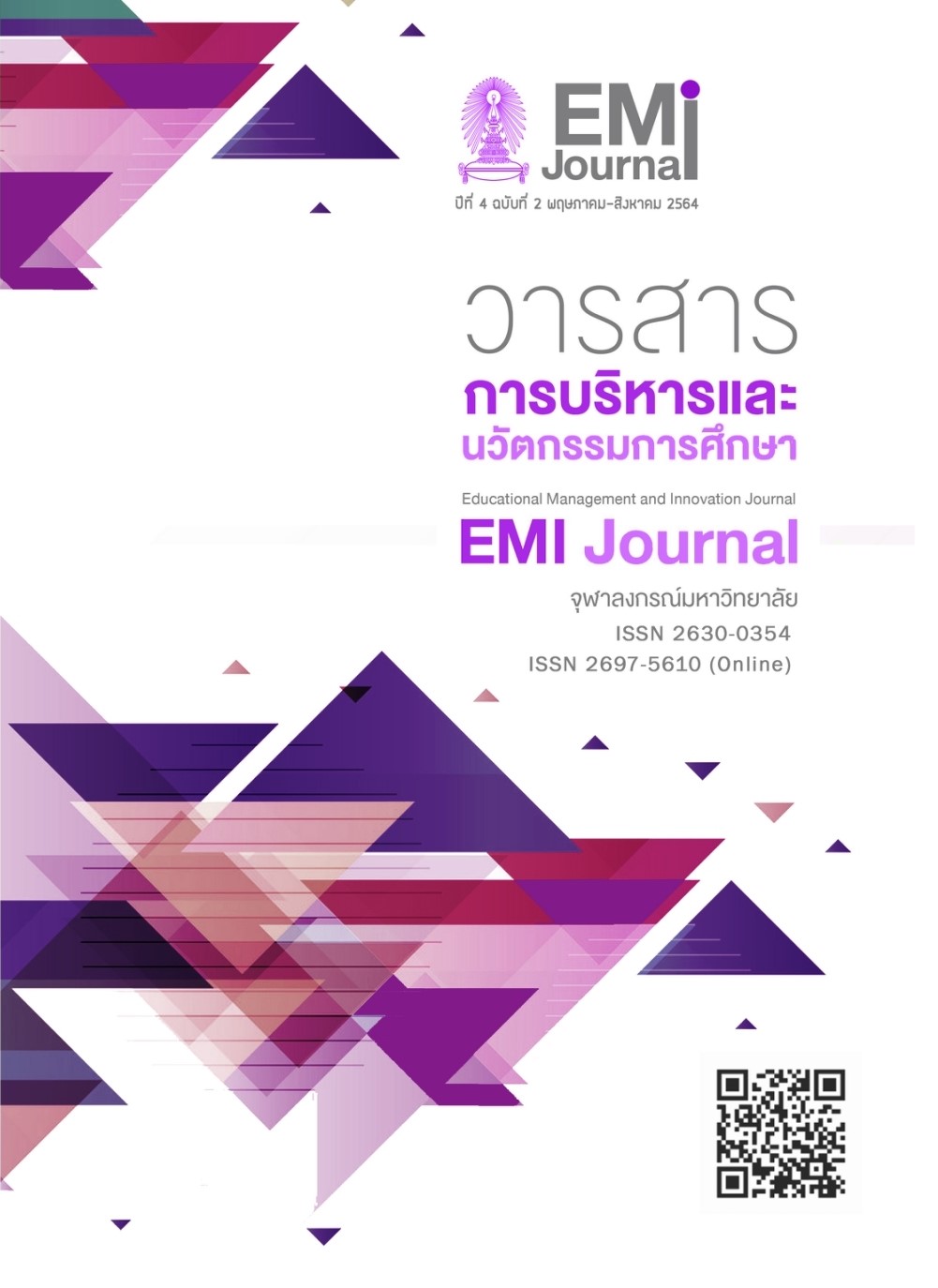การศึกษาบุคลิกภาพของนักเรียนในระดับมัธยมศึกษาชั้นปีที่ 5 โรงเรียนสาธิตแห่งมหาวิทยาลัยเกษตรศาสตร์ ศูนย์วิจัยและพัฒนาการศึกษา ด้วยแบบวัด HEXACO
การศึกษาบุคลิกภาพของนักเรียนในระดับมัธยมศึกษาชั้นปีที่ 5 โรงเรียนสาธิตแห่งมหาวิทยาลัยเกษตรศาสตร์ ศูนย์วิจัยและพัฒนาการศึกษา ด้วยแบบวัด HEXACO
คำสำคัญ:
บุคลิกภาพ, แบบวัด, มัธยมศึกษาบทคัดย่อ
ผลการวิจัยในครั้งนี้พบว่า 1) เมื่อนำแบบวัดบุคลิกภาพมาตรวจสอบคุณภาพทางด้านความเที่ยงตรงของเนื้อหาโดยใช้การหาค่าดัชนีความสอดคล้องระหว่างข้อคำถามและวัตถุประสงค์ (Index of Item-Objective Congruence: IOC) จากผู้เชี่ยวชาญค่าดัชนีของทุกข้อมีค่ามากกว่า 0.5 และมีค่าสัมประสิทธิ์แอลฟาของครอนบาช (Cronbach’s reliability coefficient alpha) เท่ากับ 0.720 2) กลุ่มตัวอย่างจากนักเรียนในระดับมัธยมศึกษาชั้นปีที่ 5 โรงเรียนสาธิตแห่งมหาวิทยาลัยเกษตรศาสตร์ศูนย์วิจัยและพัฒนา มีลักษณะบุคลิกภาพโดดเด่นในด้านอารมณ์ ด้านมีจิตสำนึก ด้านการแสดงออกอย่างเปิดเผย เป็นต้น 3) แผนการเรียนมีผลต่อบุคลิกภาพการแสดงออกที่แตกต่างกันของนักเรียน แต่ในส่วนของเพศนั้นไม่มีผลต่อความแตกต่างของบุคลิกภาพของนักเรียน
Downloads
เอกสารอ้างอิง
Ashton, M. C., & Lee, K. (2001). A theoretical basis for the major dimensions of personality. European Journal of Personality, 15, 327-353.
Ashton, M. C., & Lee, K. (2007). Empirical, theoretical, and practical advantages of the HEXACO model of personality structure. Personality and Social Psychology Review, 11, 150-166.
Ashton, M. C., & Lee, K. (2009). The HEXACO–60: A Short Measure of the Major Dimensions of Personality. Journal of Personality Assessment, 91(4), 340-345.
Ashton, M. C., Lee, K., & Son, C. (2000). Honesty as the sixth factor of personality: Correlations with Machiavellianism, primary psychopathy, and social adroitness. European Journal of Personality, 14, 359-368.
Brent W. Roberts. (2009). Back to the future: Personality and Assessment and personality development. Journal of Research in Personality, 43, 137-145.
Chiv, C., & Makmee, P. (2018). Development of a personality scale for upper secondary students in an eastern economic corridor school. Journal of Thonburi University,12, 29(Special), 71-81. [in Thai]
De Feyter, Caers, Vigna, & Berings, (2012). Unraveling the impact of big five personality traits on academic performance: The moderating and mediating effects of self-efficacy and academic motivation. Learning and Individual Differences, 22, 439-448.
De Feyter, Caers, Vigna, & Berings, (2012). Broad versus narrow traits: Conscientiousness and Honesty-Humility as predictors of academic criteria. European Journal of Personality, 25, 336-348.
Jankarn, T. (2005). Evaluation of desirable characteristics. According to the Basic Education Curriculum BE 2544. Bangkok: Office of Academic Affairs and Educational Standards. [in Thai]
MacCann, Duckworth, & Roberts, (2009). Empirical identification of the major facets of
Conscientiousness. Learning and Individual Differences, 19, 451-458.
Maltby, J., Day, L., & Macaskill, A. (2013). An introduction to psychometric testing. In Personality, individual differences, and intelligence. London: Pearson Education, pp. 631-670.
McCrae, R. R., & Costa, P. T. (1995). Trait explanations in personality psychology. European Journal of Personality, 9(4), 231-252.
Ministry of Education. (2016). Educational Development Plan of the Ministry of Education Issue 12 (2017-2021). Bangkok: Printing Agriculture Cooperatives of Thailand. [in Thai]
Suksawang, P., & Makmee, P. (2019). The Development of Basic Personality Scales for upper Secondary School Students. Journal of Educational Measurement, Mahasarakam University, 25(2), 180-191. [in Thai]



